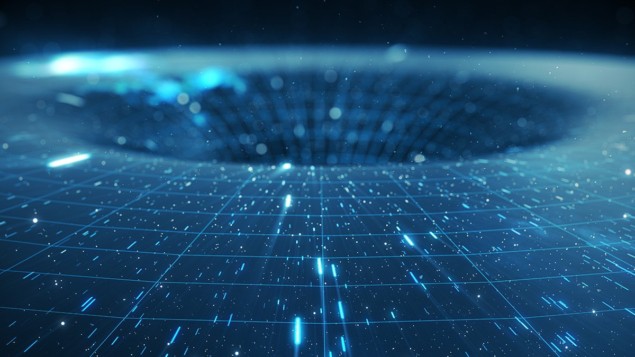
Jonathan Oppenheim at University College London has developed a new theoretical framework that aims to unify quantum mechanics and classical gravity – without the need for a theory of quantum gravity. Oppenheim’s approach allows gravity to remain classical, while coupling it to the quantum world by a stochastic (random) mechanism.
For decades, theoretical physicists have struggled to reconcile Einstein’s general theory of relativity – which describes gravity — with quantum theory, which describes just about everything else in physics. A fundamental problem is that quantum theory assumes that space–time is fixed, whereas general relativity says that space–time changes dynamically in response to the presence of massive objects.
So far, reconciliation efforts have been dominated by the idea that our current understanding of gravity is incomplete, and that a quantized description of the interaction is required. This reasoning has led to numerous lines of inquiry – including the development of string theory and loop quantum gravity. However, experiments to test these ideas are extremely challenging, and a theory of quantum gravity remains elusive.
Coupled realities
Quantum gravity is not the only path to unification, and the problem can be addressed by investigating whether quantum mechanics and general relativity could be coupled in a state of co-existence.
However, this approach has fallen by the wayside because it appears to invoke various “no-go theorems” that make the coupling impossible. Indeed, many coupling schemes would violate Heisenberg’s uncertainty principle – which is a central tenet of quantum theory.
One key assumption shared by previous coupling schemes is that the connection between the quantum and gravitational worlds is reversible. This means that if the state of the system is measured at any given time, it can be used together with its equations of motion to predict its state at any point in the past or future.
Now, Oppenheim argues that this assumption may not be needed and says that the coupling could be stochastic. This means that the system’s past and future states cannot predicted definitively based on a single measurement. Instead, the past and future can only be predicted with probabilistic equations that present a range of possibilities.
Stochastic framework
In his study, Oppenheim builds on this idea to develop a new stochastic framework for coupling the quantum and classical-gravity worlds. Since these worlds have fundamentally different rules, Oppenheim’s theory uses separate statistical theories for each of them.
On the quantum side, Oppenheim assumes that the states of the system are constantly affected by random fluctuations in the surrounding environment. On the classical side, states appear instead as probability distributions within the system’s phase space.

Quantum complexity could solve a wormhole paradox
Drawing these two descriptions together, Oppenheim describes a single “classical quantum state”. This state simultaneously predicts the system’s probability of existing in some region of phase space, and its quantum state in that particular region.
This allowed Oppenheim to derive an equation that describes the coupling between quantum mechanics and classical gravity, while preserving each of their unique characteristics. This in turn allowed him to explore the deeper physical implications of his ideas. These include the possibility of coupling between general relativity, and the quantum field theory underlying the Standard Model of particle physics.
The proposal is described in Physical Review X. In a viewpoint article accompanying the paper, Thomas Galley at Austria’s Institute of Quantum Optics and Quantum Information in Vienna says that Oppenheim’s idea is both radical and conservative at the same time – rejecting firmly rooted assumptions, while still remaining consistent with long-established physical laws. However, he warns that “trading quantumness for stochasticity has its own conceptual difficulties”. He points out that, “Oppenheim finds that quantum information can be lost in a black hole, a result that many physicists might find unacceptable”.



